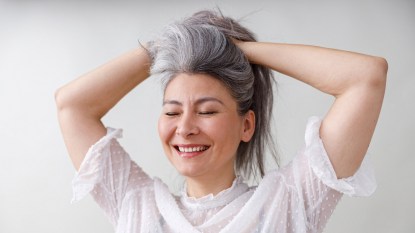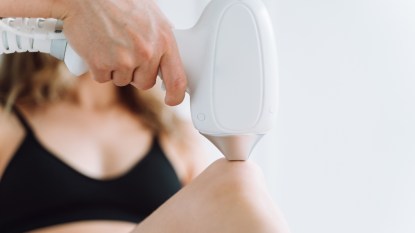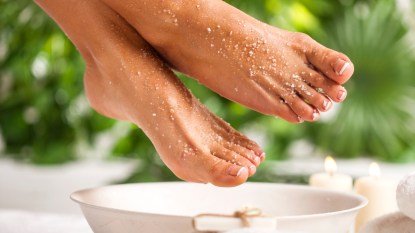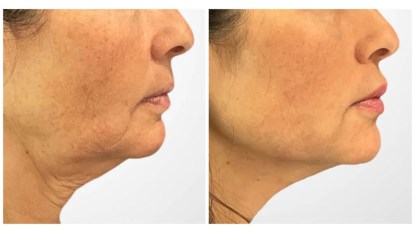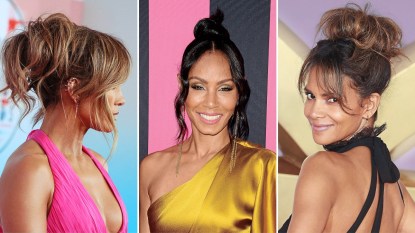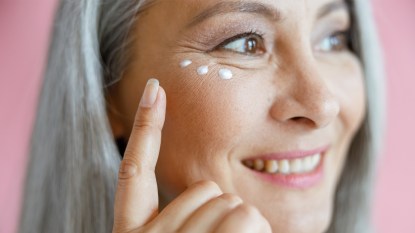Is Dry Shampoo Bad for Hair? Experts Weigh In + How to Pick the Best One for You
Plus, what to do if you've accidentally applied too much
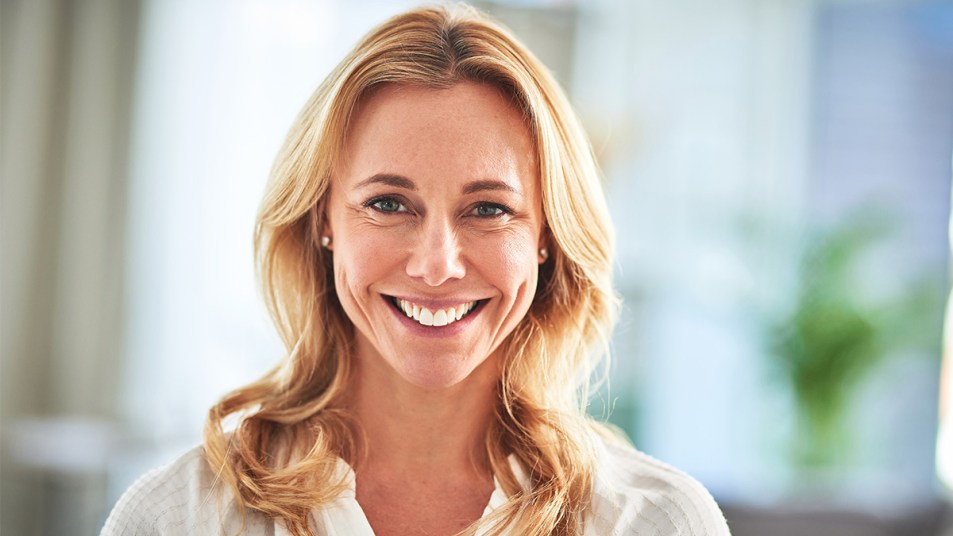
If you put time and effort into blowing out your hair or creating bouncy curls, then you’ll want that style to last for as long as possible. That’s where dry shampoo comes in. Dry shampoo can be used for anything from adding volume to refreshing your locks days after washing. Thanks goes to its ability to add texture and absorb oils and dirt from your scalp when you don’t have time for a proper wash. As it turns out, not all dry shampoos are created equally — and there’s a learning curve to using these style extenders properly. And it’s also possible to go overboard with them, too. So we turned to the pros to answer all the questions you might have, including is dry shampoo is bad for hair. Read on to find out what you need to know about adding dry shampoo to your hair care regimen.
What is dry shampoo?
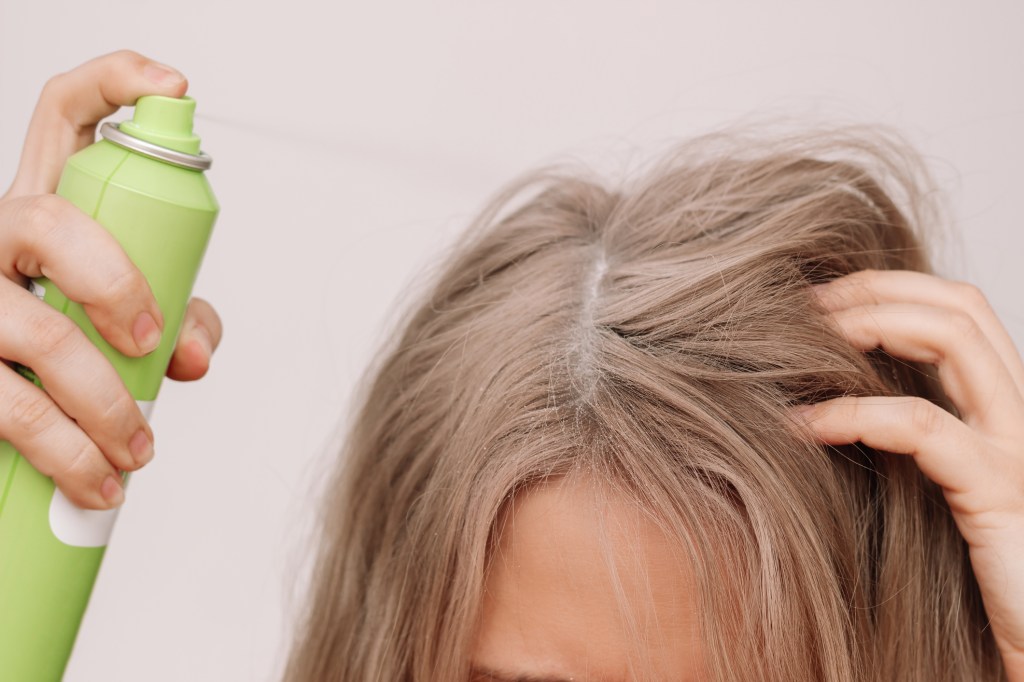
“Dry shampoo is a styling product used to absorb the oil in your hair on a non-wash day,” says Juli Akaneya, a New York City-based celebrity hairstylist who works with VERB. “It’s a quick fix for someone on the go who doesn’t like to wash their hair too often and is concerned with their greasy roots. It can also help boost volume and hold.”
According to John Warren, a hairstylist at FOURTEENJAY Salon in New York City, dry shampoo was initially developed for women looking to extend their weekly salon blowouts. And it quickly became a solution for anyone looking to go a little longer between washes or quickly touch up their hair midday. Nowadays, he notes dry shampoo is also used as a styling product on clean hair to add wanted texture or volume.
What is dry shampoo made of?
Whether you’re using dry shampoo after a workout or on a busy morning when you don’t have time for a wash — or to build body in clean hair — this category of products contains key substances that target the scalp. All dry shampoos essentially function the same way, even though the format of application can run the gamut, from a powder that you sprinkle or brush on to aerosolized or liquid sprays. “Dry shampoos typically use ingredients like starch that work to absorb excess oil, grease and sebum that our scalp produces,” says Helen M. Torok, MD, a board-certified dermatologist, medical director of the Trillium Creek Dermatology Center in Ohio and co-founder of HH Science.
Is dry shampoo bad for your hair?
The short answer is no — with the caveat that dry shampoo must be used in moderation and with care. That’s because dry shampoo tends to build up on the hair and scalp. And this build-up can clog and inflame hair follicles, potentially leading to hair health issues down the road beyond just the typical itchy scalp or dandruff.
“Using too much dry shampoo can put a white film on the hair, make the hair feel and appear dull, and weaken the follicle over time,” says Lucy Garcia Planck, a hairstylist at Sharon Dorram Color at Sally Hershberger Salon in New York City. Also, she says, “safety is a concern, as dry shampoo can cause thinning and hair shedding. Dry skin [from application] can also clog the hair follicles, which can disrupt, slow down or stop hair growth.”
Remove buildup with a scalp treatment
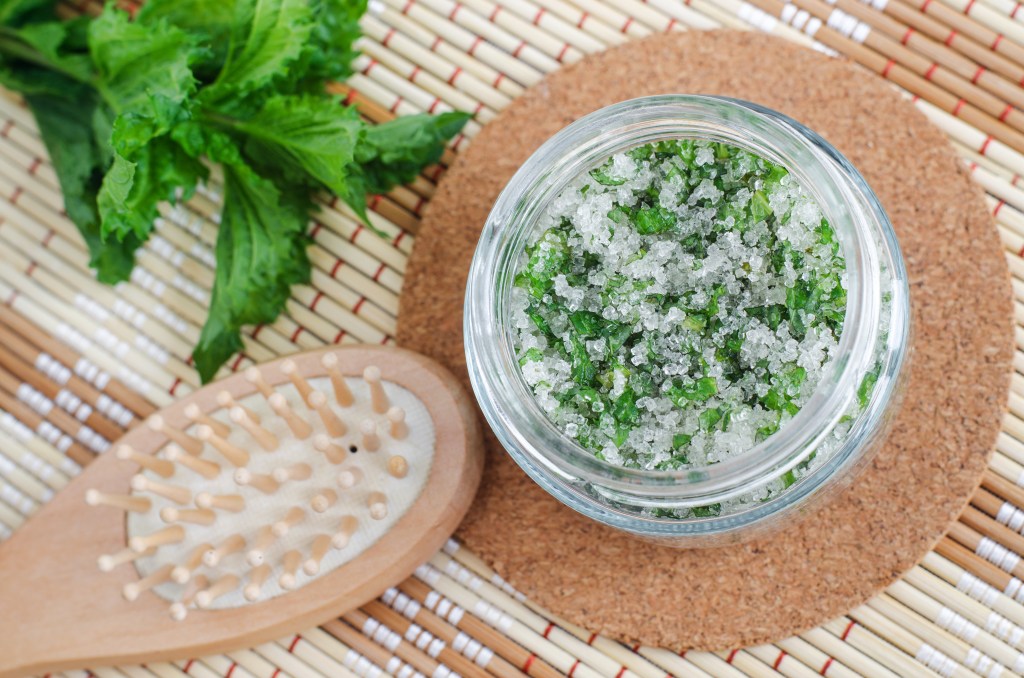
For all of the reasons mentioned above, if you’re using dry shampoo frequently, it’s a good idea to give your scalp some extra TLC. “Using a cleanser specially formulated to exfoliate the scalp is a must,” says Warren. “Long-term build-up can cause shrinkage to the follicle. This can produce a smaller diameter of each hair strand, giving the impression of thinning hair.” He suggests weekly exfoliation to help decongest the scalp, stimulate blood flow and promote healthy hair growth. “If you use a lot of dry shampoo, think about having a scalp treatment,” he adds. To treat the scalp at home, you can use a scalp scrub or a clarifying shampoo.
Avoid certain ingredients in dry shampoo
Ingredient transparency is also a must. Back in late 2021 and late 2022, the U.S. Food and Drug Administration (FDA) announced a couple of nationwide recalls of aerosol dry shampoos due to elevated levels of benzene, a known carcinogen linked to blood disorders and cancers like leukemia. Though many of the affected brands have since cleaned up their products, you’ll want to examine the ingredients of a dry shampoo before using it, particularly if aerosolized. That’s why it’s best to find one with the simplest formulas when possible. “Always use a clean dry shampoo formula that does not contain toxic ingredients, chemical parabens or artificial colorants or dyes,” advises Dr. Torok. “These will disrupt the scalp microbiome and cause irritation.”
Related: Is Blow Drying Hair Bad? Experts Reveal the Pros and Cons
How often should I use dry shampoo?
It’s important to not overly rely on dry shampoo. “It’s a style extender — not a washing replacement,” says Akaneya. “I recommend using a dry shampoo no more than two days a week and no more than two days in a row, as it will start clogging the hair follicles and lead to scalp irritation,” says Dr. Torok.
Most people have hair that’s compatible with dry shampoo when used properly. The only exception? “Individuals with very dry, sensitive scalps should avoid using dry shampoo, as it may irritate their scalp more,” says Akaneya. “Additionally, people with really dry, coarse and frizzy hair should refrain from using it because this hair type lacks moisture, so the powder will only absorb more moisture.”
How to pick the best dry shampoo for you
You’ll want to select a product that’s best suited for your hair. “Do your research before buying a dry shampoo, as it is specific to hair type and color,” says Planck. “Aerosol dry shampoo is best for normal to oily hair and, honestly, works for most hair types. Powder/sprinkle dry shampoo is best for fine and lighter hair colors.”
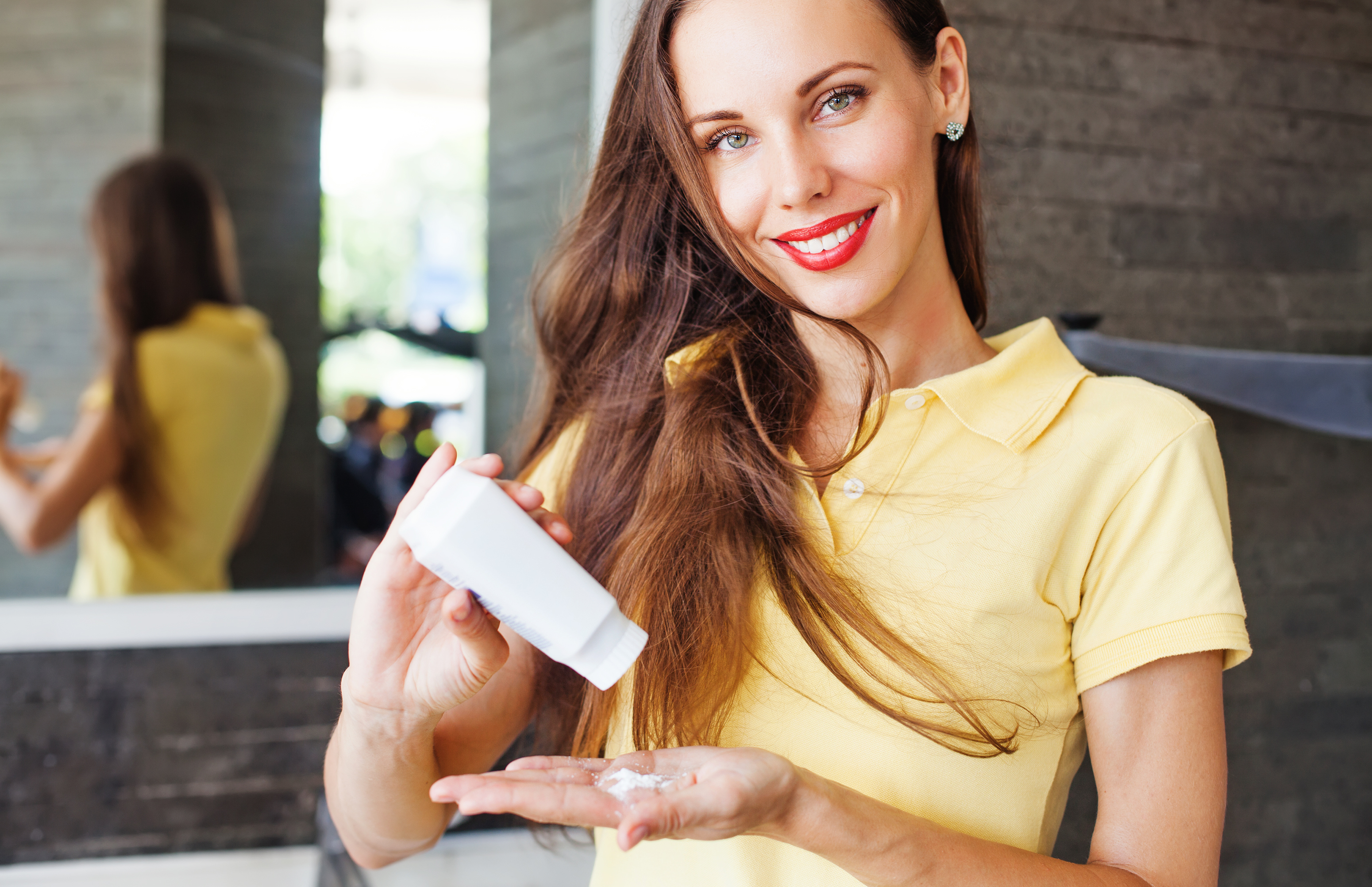
“Aerosol has great coverage, especially if you’re using one with color,” says Warren. “This can cover up regrowth…the downside is that it is more difficult to apply the aerosol to specific areas,” which can result in overspray. That’s where powders can come in. “The brush application is great for small/specific areas but may not have the best coverage, if using it for [concealing] regrowth,” says Warren. “The sprinkle powder may get a little messy but is good for an all over textured feel.”
Mousse-like foams are available, too. “This option is great for someone who has trouble blending the powder dry shampoo into their hair,” says Akaneya. One caution with dry shampoo foams: they “may not be suitable for those who frequently heat style their hair, as it is a bit wet and can revert the hair texture back to its natural state.”
The best dry shampoos that keep hair healthy
If you’re looking for a dry shampoo to add to your styling lineup, try one of these expert-approved picks.
Best tinted dry shampoo
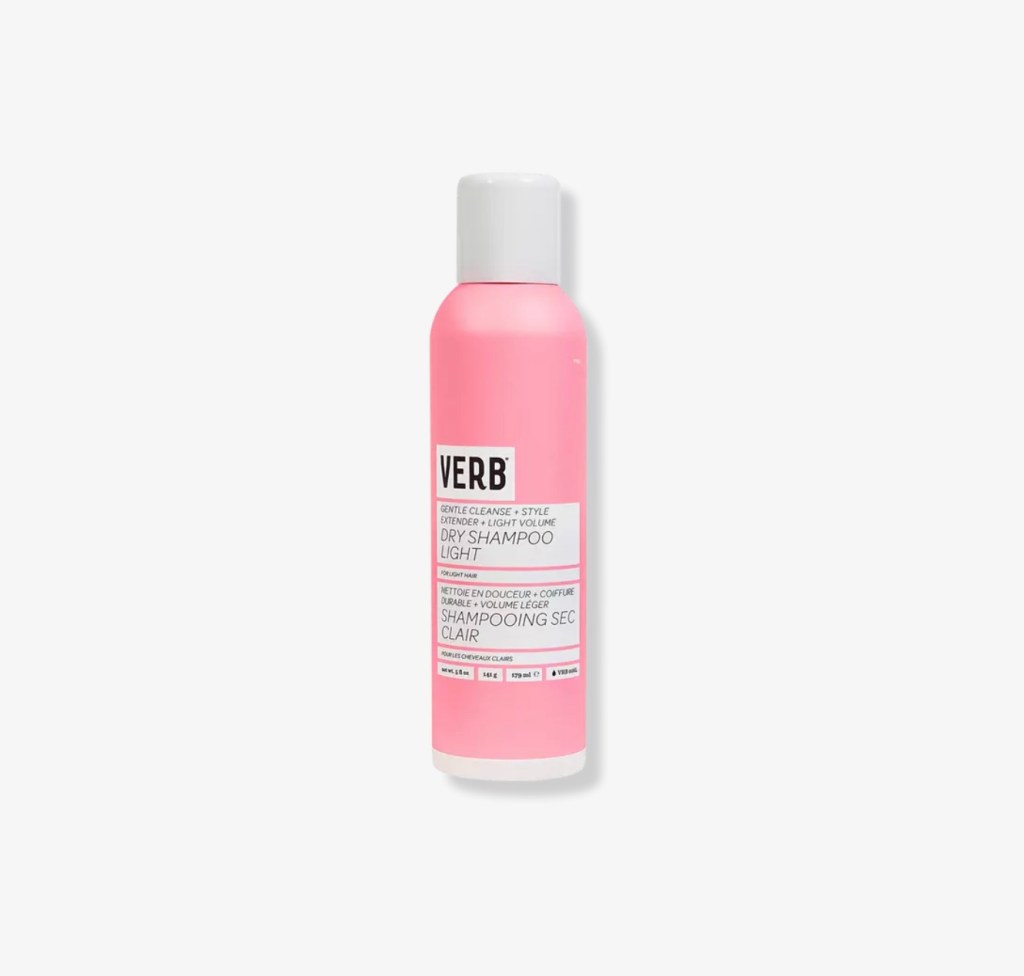
VERB Dry Shampoo (Buy from VERB, $20)
Akaneya loves this dry shampoo that’s powered by rice starch and smells fresh and fruity, thanks to pomegranate and bilberry extracts. “They are made for every hair type and the ingredients are clean,” she adds. You can also choose between light and dark formulations based on your hair color. And it comes in a travel size for on-the-go touchups.
Best clear dry shampoo
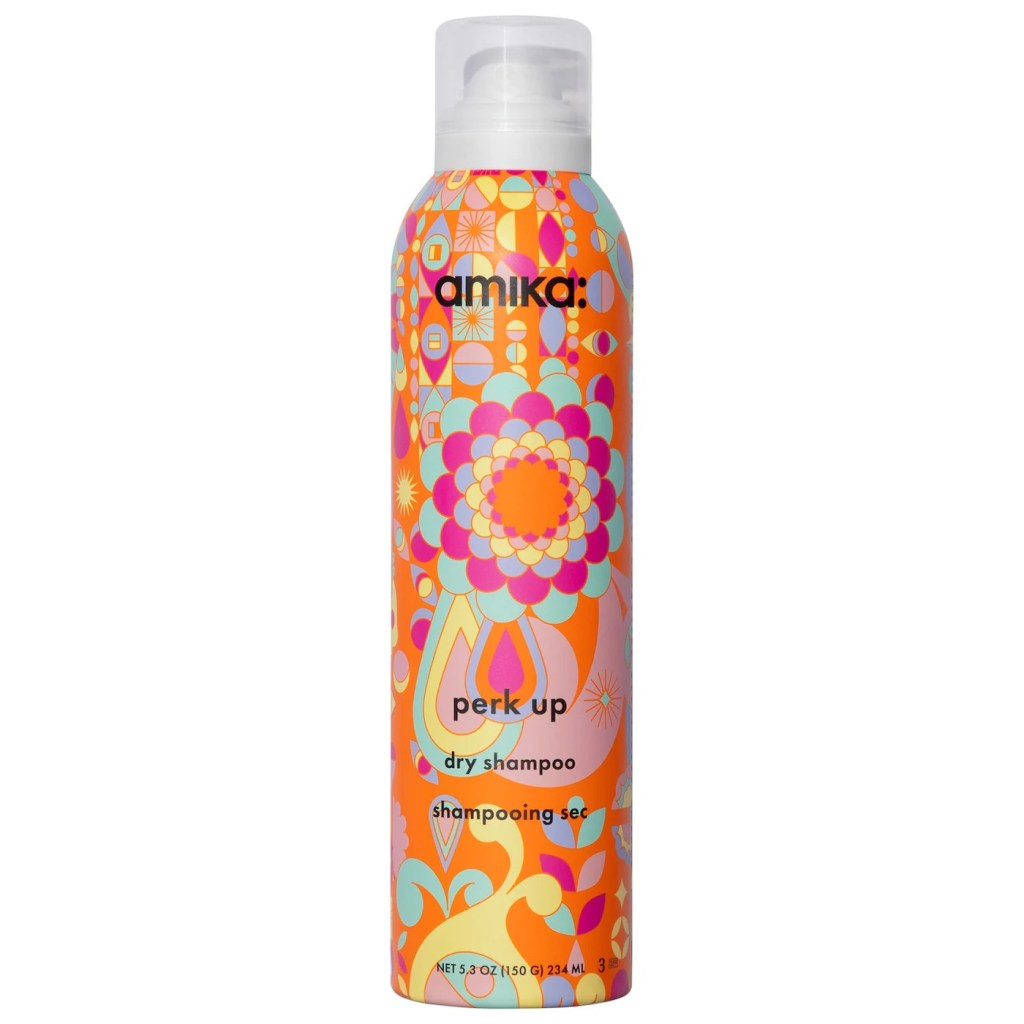
amika Perk Up Talc-Free Dry Shampoo (Buy from Sephora, $28)
Planck likes this talc-free dry shampoo for getting rid of excess oil. The formula sprays on clear, so you don’t have to worry about the white cast many other dry shampoos can create.
Best gentle dry shampoo
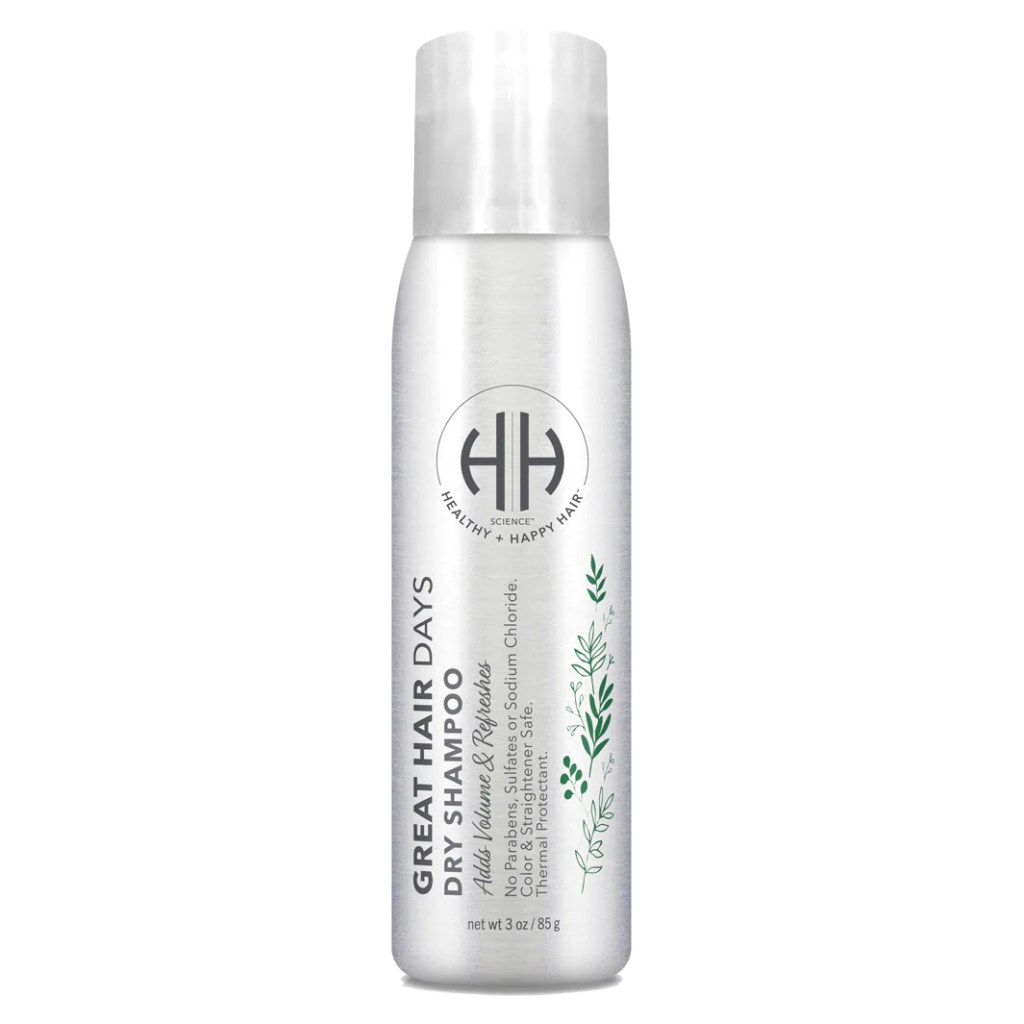
HH Science Great Hair Days Dry Shampoo (Buy from HH Science, $32)
“As a dermatologist, I always recommend clean formulas that contain natural starch and a limited ingredient deck that refreshes the hair and absorbs excess oil, grease, and sebum in-between washes without disrupting the scalp microbiome,” says Dr. Torok. So she formulated this dry shampoo to do just that, and it’s safe for colored, straightened, and chemically-treated hair as well as for those with extensions. “It is clean, contains natural starch, and is free from artificial dyes, colorants, irritants, and chemical parabens.”
Best volumizing dry shampoo
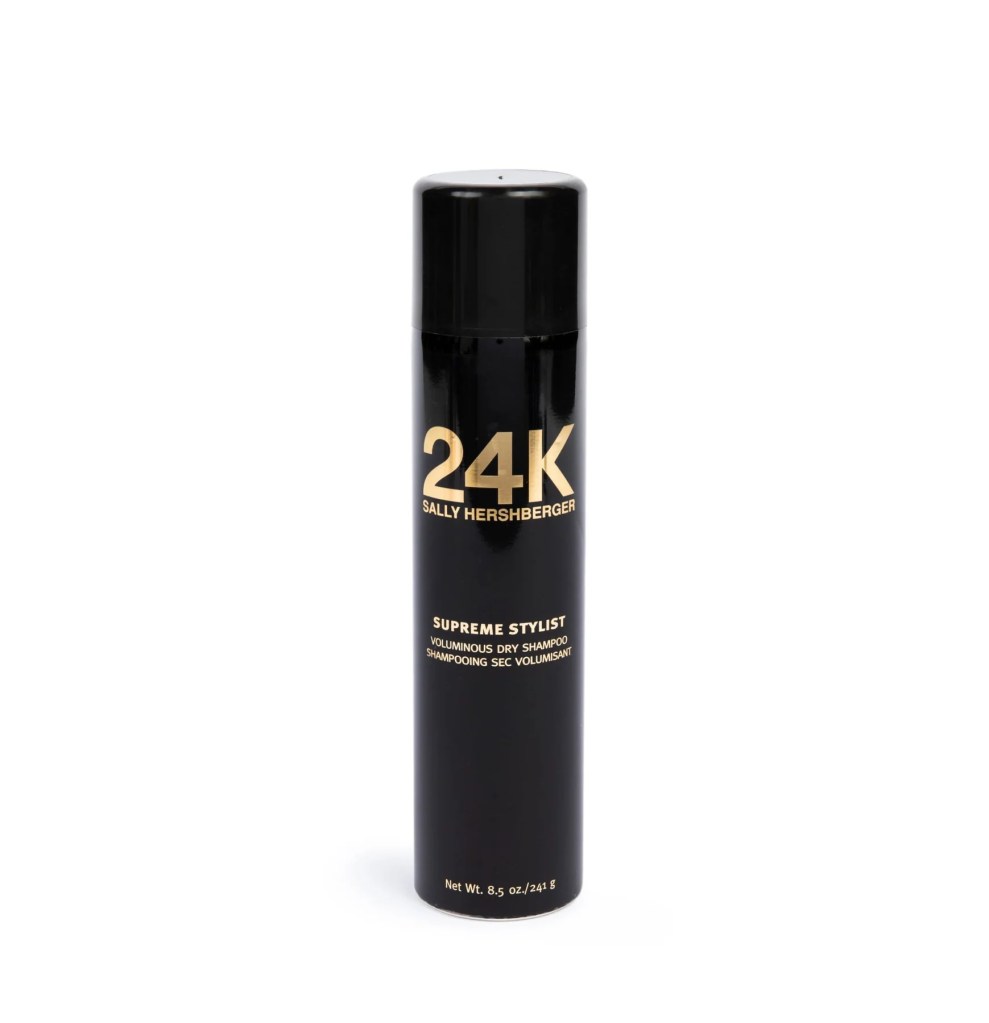
Sally Hershberger 24K Supreme Stylist Voluminous Dry Shampoo (Buy from Amazon, $7.99)
If you’re looking for a dry shampoo that amps up the volume, try this recommendation from Planck. And contains keratin and glycerin to create extra body and hold to fine or thin hair.
Best splurge dry shampoo
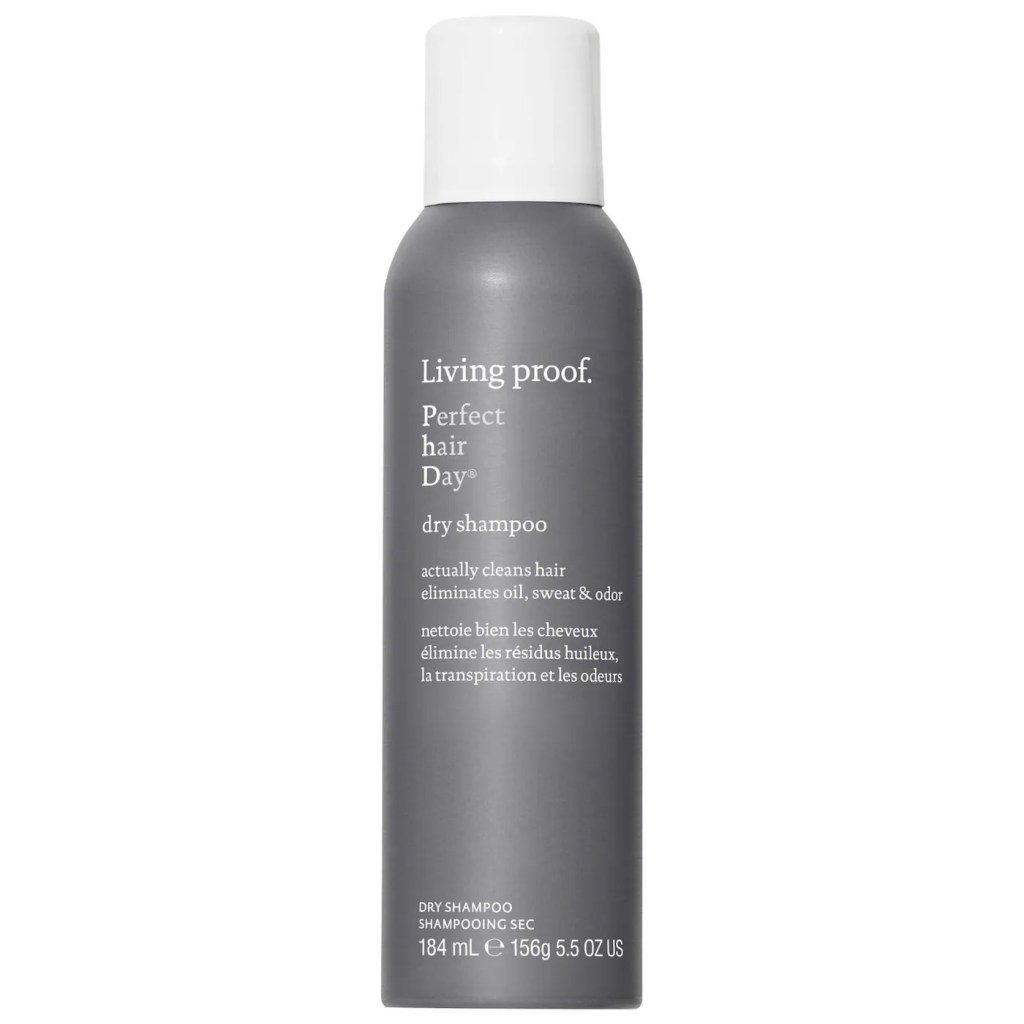
Living Proof Perfect hair Day (PhD) Dry Shampoo (Buy from Sephora, $30)
This dry shampoo has a cult-following because of it’s oil-absorbing powers. Plus, it has a delicious smell that makes hair smell clean and fresh all day long.
Best drugstore dry shampoo
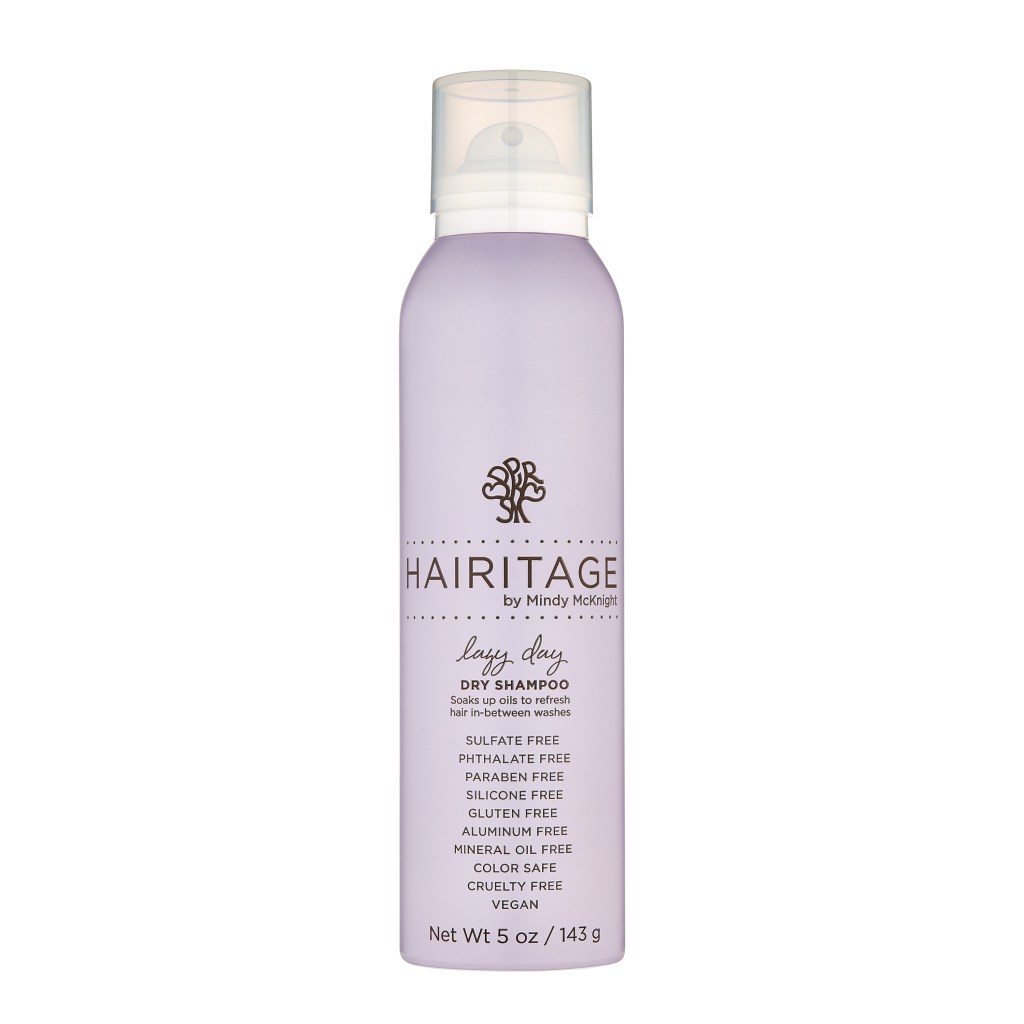
Hairitage Lazy Day Dry Shampoo (Buy from Walmart, $8.94)
For a great drugstore option, this one costs less than $10 and works just as good as the above options. Plus, it’s color-safe, so there’s no worry of dulling your dye.
How to apply dry shampoo
When it comes to application, you’ll want to follow the manufacturer’s instructions on the packaging and concentrate on your roots to target the absorption of oil.
For aerosol dry shampoos: Positioning the bottle correctly before spraying is everything. “The best way to apply [spray] dry shampoo is 12 inches from the scalp, says Planck. She advises shaking the bottle, sectioning hair, then spraying on the scalp. Finish by “massaging the root with your fingertips or a flat brush to distribute the product all over the scalp.”
For powder dry shampoos: “Gently sprinkle the powder directly onto the roots and massage into the scalp,” says Dr. Torok.
For mousse/foam dry shampoos: Add a dollop to palms, then work into hair with fingertips, then brush through and let dry.
To see more tips on applying dry shampoo, check out the bellow video from on @styledbysamvay YouTube.
What to do if you’ve gone overboard with dry shampoo
If you’ve used dry shampoo before, then you’ve probably encountered the white cast some formulas can leave on hair, particularly if you apply too much or you spray too close to your head. This effect tends to be more pronounced on darker hair.
“An easy fix for this is to apply heat with a blow-dryer to the hair,” says Akaneya. “It helps penetrate the powder into the hair and can also help to knock off some of the extra product.” Warren also suggests using a soft bristle brush to get rid of any excess product still lingering. And “if worse comes to worse, wash your hair with a clarifying shampoo,” advises Planck.
For more hair care tips, click through these stories:
Purple Shampoo Revives Faded Hair Color So It Looks Like You Just Left the Salon
These TikTok-Approved Hair Masks Are the Secret to Lush Strands — DIY at Home for Pennies!
Hair Cycling Is the TikTok Trend That Can Make Your Hair Look Healthy, Shiny and Full


